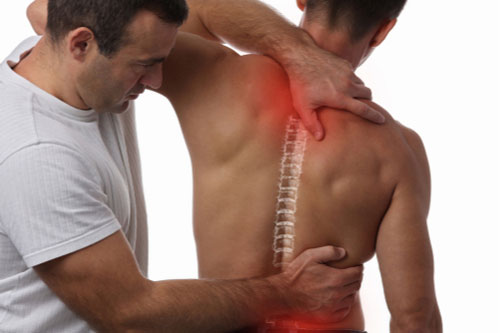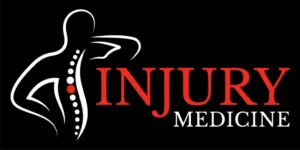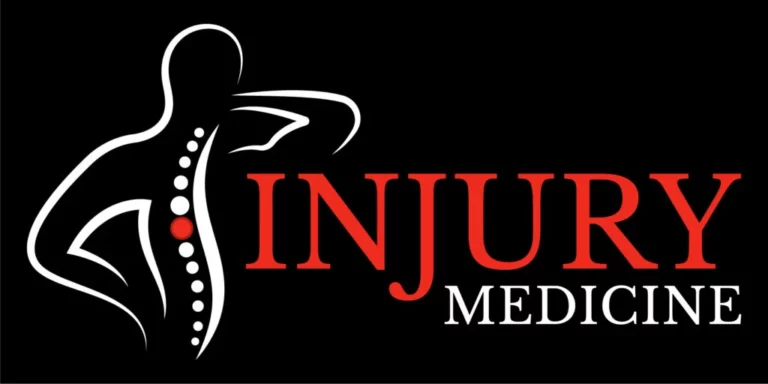Back injuries are not uncommon, especially to the lower back. They can occur gradually over time or suddenly. If you have a habit of overusing your back or doing heavy lifting, you put yourself at risk of suffering a back injury. This kind of injury makes it hard to move or perform your everyday activities.
If you suffer a back injury, you need to find the right back injury treatment in Spartanburg. The team of doctors at Injury Medicine in Spartanburg, SC will be able to help treat the injury and put you on the path to recovery. Call us today at 864-866-PAIN to schedule an appointment!
Symptoms of a Back Injury
Back injuries have a vast array of symptoms including:
- A stabbing or shooting pain
- Reduced ability to flex the back or decreased range of motion
- An aching sensation in the lower back
- The inability to stand straight without feeling pain.
More serious back injury symptoms include:
- Pain lasting beyond a few weeks
- Pain that spreads down one or both legs
- Unexplained weight loss
- Numbness, tingling, or weakness in your legs
- Loss of bowel or bladder control.
If you experience any of these symptoms, you need to contact Injury Medicine and schedule an appointment as soon as possible.
What Are the Common Types of Back Injuries?
Here are some of the common back injuries our doctors in Spartanburg treat.
Herniated/Bulging Discs
A common type of back injury is a herniated or bulging disc. This usually happens when there is a problem with the rubbery cushions between the vertebrae (referred to as discs). A herniated disc occurs when the softer interior pushes via a tear in the exterior of the disc. This irritates the nearby nerves, resulting in painful symptoms.
In some cases, however, people with a herniated disc don’t experience any symptoms. Your practitioner will discuss the available treatment options depending on the severity of your condition. Treatments include medication, injections, and rest.
Nerve Damage
Nerves are crucial in transporting information that oversees sensations in the body and movements to the brain. Nerve damage in the back occurs when there’s extreme pressure applies to a nerve surrounding tissues like muscles, bones, cartilage, and tendons. This affects nerve functionality, resulting in nerve pain, increased sensitivity, weakness, tingling, and even numbness.
Fractured Vertebrae
Fractures to the vertebrae range from simple compression types (the bone collapses on itself) to the burst type, where bone pieces blow out into the surrounding tissues. Fracture dislocation is the most severe type of fracture where the bone breaks and the ligaments also get damaged, resulting in the bones sliding away from each other.
Soft Tissue Injuries (STI)
These injuries are experienced when there is trauma or overuse of the muscles, tendons, and ligaments. Soft tissue injuries tend to occur during sports activities and exercise. However, they can also occur during simple daily activities.
How Will the Doctor Diagnose My Back Injury?
Clinical or medical diagnosis is a process designed to identify the underlying cause of your back pain or injury. The practitioner will determine the root cause through a combination of the following.
Medical History Review
First and foremost, the practitioner will ask an array of questions including when the injury and symptoms occurred, how your back feels, and what activities or treatments make the pain feel better or worse. They will also conduct a comprehensive review of your medical history and records.
Physical Examination
A physical exam is conducted in the clinic and usually includes several aspects of a comprehensive exam. These include:
- Several motion tests to determine the mobility and alignment of the joints involved.
- A visual inspection of your posture and the skin overlying the affected area.
- Segmental assessment to check the spinal sections for ideal motion
- A hands-on assessment by palpating for tender areas and muscle spasms
- A neurological assessment, including tests of reflexes, skin sensation, cranial nerves, and muscle strength.
Computerized Tomography (CT) Scan
A CT scan is a type of imaging that uses radiation to make multiple cross-section images. A CT scan is conducted with a contrast dye that is injected into your spinal canal to give a better view of the soft tissues.
X-Ray
This is another type of imaging that reveals the details of your spine’s bony structures. X-Ray is particularly helpful in identifying degenerative changes or fractures and can help identify some types of rheumatological causes of pain such as osteoarthritis.
MRI
This is another type of diagnostic imaging that checks the spines and soft tissues including discs and nerve roots. MRI scans also help distinguish between chronic and acute conditions. If the doctor is examining a spine with a surgery history, an MRI is conducted after a contrast dye is injected to provide a better view of blood flow in that area.
Common Types of Back Injury Treatment
At Injury Medicine, you will come across a wide array of treatment options, each depending on your needs and the severity of the injury. Some of the most common treatments include:
Medication Management
This involves taking over-the-counter medication and prescription medication. Your doctor should be able to give consumption directions, which you should follow for the best results.
Chiropractic Adjustments
This is a less invasive and affordable alternative to conventional medical treatments. Chiropractic adjustments help avoid complicated surgical procedures and medications with undesirable side effects. Through techniques like spinal manipulation and alignment, chiropractic adjustments alleviate pressure on the CNS, and as a result reduced chronic inflammation.
Radiofrequency Ablation (RFA)
Radiofrequency ablation is a minimally invasive procedure that involves heating a section of a pain-transmitting nerve with a specialized needle in order to make a heat lesion. The result is a lesion that blocks pain signals to the brain.
Low-Level Laser Treatment
Also referred to as LLLT, low-level laser treatment entails using low-level lasers or light-emitting diodes on the body to affect the connective tissue cells (fibroblasts), serve as an anti-inflammatory agent, and accelerate the connective tissue repair.
Other treatment options available at the Injury Medicine include injections, Kyphoplasty, and Orthopedic Surgery.
Call Us for the Best Back Injury Treatment in Spartanburg!
Back injuries are painful and distressing, affecting the ability to go about your day normally. However, you don’t have to live like this. Our team at Injury Medicine has extensive experience in treating different types of back injuries. If you live in Spartanburg, SC, you can seek relief by calling 864-866-PAIN today!


